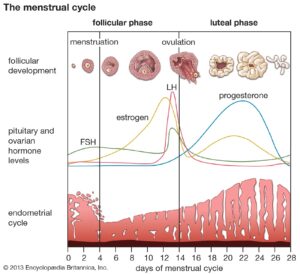
25 Nov 2022
Demystifying training around your menstrual cycle
To train successfully in rowing – and most sports for that matter – it requires a combination of a number of elements; your motivation, a good coach and training programme, the right equipment, nutrition, some good luck. Pull out of that mix the training programme and delve down into it to make the most of your monthly cycle.
Training, competing and the menstrual cycle has taken a while to get onto the agenda helped along recently by some high profile athletes publicly talking about how it affects them in competition. But studies and information on the topic is sparse. It is, however, increasing.
Alessandra Patelli recently retired from rowing after a decade on the Italian national team and after competing at the Tokyo Olympics. The two-time Olympian studied to be a medical doctor while rowing and is now a sports medicine specialist and team doctor for the Italian Rowing Team. Her experience of rowing as a woman is possibly reflective of many menstruating athletes.
For Patelli the menstrual cycle was a taboo subject. She never discussed it with her coaches or any other support staff and knew that if she brought it up it would cause embarrassment. But, Patelli says, she was lucky and had very few issues with her period.
“I was lucky to be very regular and I never skipped a period so I didn’t feel the need to talk about it with coaches,” says Patelli. “But if I had it would have been really difficult to talk to coaches. I don’t want to blame them, but it was definitely a ‘taboo’ topic. Also we didn’t have any female coaches that would probably have been easier to talk to.”
How best to train during your period was never mentioned.
“I actually knew nothing about training during your menstrual cycle,” says Patelli. “It was not a topic we spoke about with coaches, or among the female athletes. Sometimes I’d ask my teammates if they had any irregularities, but only out of curiosity because I was studying medicine.”
Anecdotally the menstrual cycle is seen as an interference to training. Everyone experiences it differently from having no impact to feeling bloated or cramping or other forms of pain. Former Australian national team rower and now medical doctor Alice McNamara was part of a study into the perception of menstrual cycle on performance. The study asked 195 Australian female athletes preparing for the Tokyo Olympic/Paralympic Games on their perceived effect of the menstrual cycle. The conclusion was the majority (around two-thirds) perceived their menstrual cycle affected their performance (published in BMJ Open Sport & Exercise Medicine)
There is, however, now research that is finding the monthly cycle is something that can be used to positively impact training methods, training intensity and can be worked with to get the best out of the athlete.
Relating the menstrual cycle to training
The menstrual cycle begins at puberty and is not just about female reproduction. Research suggests it also regulates physiological, metabolic, thermoregulatory and cognitive functions in the body. This means there’s a huge number of avenues for sports scientists to enquire about in the quest to find performance gains and improve athlete health during the menstrual cycle.
International researchers have been exploring how hormonal fluctuations during the menstrual cycle can affect things like biomechanics, laxity of ligaments and muscular firing patterns – research that could help reduce injury rates in women athletes.

Making the most of the menstrual cycle
The hormone oestrogen rises in the first half of the menstrual cycle. In this time oestrogen helps to energise the body. This means there’s potential to train harder during this period. This equates to a good time to do strength and resistance training. During this phase the body is able to adapt and revoer quicker.
Exercise physiologist Dr Stacy Sims has studied women’s health in relation to training and has noted that the body is designed and ready to take on stress during the period leading up to ovulation. This first part of the menstrual cycle is when the body needs to be strong and resilient to stress as it tries to mature the egg.
“During this low hormone phase, the immune system is really robust and can take on virus and bacteria, the muscles are really primed for taking on high load and recovering well, we have a greater availability of carbohydrate utilisation, which is really useful for high intensity work,” Sims described in an article in stuff.co.nz
Then in the second half of your menstrual cycle – after the ovulation phase – the hormone progesterone kicks in to make a nutrient dense environment suitable for a fertilised egg to develop. During this time the body is not as ready to take on a high intensity load as it’s using proteins and carbohydrates to help build the lining in the uterus. Also towards the end of your period, the levels of both progesterone and oestrogen fall. This can be a time when you may feel sluggish.
Is misunderstanding rife?
Rather than misunderstanding, it’s more a lack of understanding played out due to a lack of information and not enough discussion. As Patelli mentioned, when something is perceived as ‘taboo’ the opportunity to discuss becomes limited.
What about missing or losing your period?
When you miss more than three periods in a row it’s called Amenorrhoea. When you only have 6 – 9 periods in a year it’s called Oligomenorrhoea. Both of these mean that the body isn’t producing the hormones as expected. In athletes the most common reason for amenorrhea or oligomenorrhea is not having enough food (energy intake) for the amount of exercise / training being carried out. It can also be due to excessive exercise or stress.
“Menstrual disfunction is one of the symptoms of RED-S (Relative Energy Deficiency in Sport) and it is linked to the bones increased risk of stress fractures and early onset osteoporosis so it has a great impact in rowers who are prone to stress fractures,” says Patelli. “RED-S is often underdiagnosed. I know we had a case on our team.”
Patelli knew that amenorrhoea was very common among the lightweight rowers on her team. “I have no exact information, but I know a few had problems getting pregnant. I don’t know it is linked, but it could be.”
There’s no doubt the menstrual cycle, like the workings of the human body, is complex, but research is growing and developing now at a faster rate than ever before.
Patelli only recently started learning about training and the menstrual cycle. “We must start talking with athletes about the menstrual cycle in order to prevent problems. We must also be prepared as important races may take place during the menstrual cycle and we have to be ready to do a good performance at any time.”

